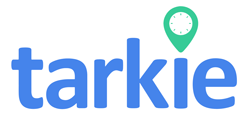Ever thought about how much time your HR team spends on leave requests? If they had more time, what could they do? Automating leave requests in an attendance system cuts down on work for HR. It makes managing time off more efficient.
In the Philippines, small and medium-sized businesses (SMEs) can really benefit from using technology like SaaS platforms. For example, EmpMonitor can be a game-changer. It helps with following local labor laws and makes employees happier by making the approval process clear and quick.
Find out how automated leave approvals can make your attendance system better. It changes how leave is handled in your company.
Key Takeaways
- Automating leave requests can save HR personnel up to 50% of their time.
- A user-friendly system enhances employee satisfaction with transparent processes.
- Employers report a 40% decrease in scheduling conflicts once automation is implemented.
- Real-time updates and notifications improve compliance and communication.
- Companies that use automated systems can significantly reduce operational expenses related to leave management.
Understanding the Importance of Leave Management
Leave management is key to keeping productivity and morale high in any workplace. It lets employees take breaks without slowing down work. In the Philippines, where taking time off is important, using paperless systems can change the work culture.
This change makes processes smoother and helps track leave better. It also reduces arguments over time off.
Studies show that automating leave can cut admin costs by up to 30%. It also saves HR time, with a 50% drop in leave request handling. So, a good leave management system is good for employers and builds trust with employees.
In small and medium businesses, old methods like paper and spreadsheets can cause problems. A central leave management system stops scheduling issues and boosts accuracy. It also helps follow labor laws and makes leave requests easier.
What is an Attendance Management System?
An attendance management system is a software that helps track employee attendance and manage leave requests. It’s great for small and medium enterprises (SMEs) in the Philippines. These systems make it easier to handle vacations, sick leaves, and other absences.
They have features like automated leave requests. This makes it simpler for employees and managers. It reduces paperwork and administrative work.
These systems also have digital approval workflows. This cuts down on paperwork and makes things more efficient. It helps HR departments avoid mistakes in tracking employee time off.
For example, using real-time attendance tracking can lower errors by about 30%. This makes attendance data more reliable.
Attendance management systems also offer powerful reporting and analytics. They help organizations allocate resources better by 25%. This gives HR managers a clear view of attendance patterns.
They can make better decisions about staffing and leave policies. Integrating attendance data with payroll systems also reduces errors by about 40%. This makes financial operations smoother.

| Feature | Benefit | Impact on Management |
|---|---|---|
| Automated Leave Requests | Reduces administrative workload | Up to 60% decrease in manual processing |
| Real-Time Attendance Tracking | Less discrepancy in records | Approximately 30% reduction in errors |
| Digital Approval Workflows | Faster processing of requests | 40% decrease in average approval time |
| Reporting and Analytics | Better understanding of attendance issues | 25% improvement in resource allocation |
| Integration with Payroll | Lower payroll processing errors | 40% decrease in mistakes |
Using attendance management systems is a big step for SMEs. It boosts operational efficiency and ensures compliance with labor laws. These tools improve employee time off management and boost satisfaction and retention.
Benefits of Automating Leave Requests
Automating leave requests brings big benefits to small and medium businesses. It makes streamlined leave approval processes faster. This means managers spend less time on approvals and more on important tasks.
Automated leave systems track time off well. They watch employee attendance in real-time. This helps businesses plan better and avoid disruptions.
Automation cuts down on mistakes in leave requests. It stops double-booking and keeps the workflow smooth. It also makes sure everyone follows the same rules and is treated fairly.
For instance, GONE®, a time-off request tool by Paycom, saves HR staff about 200 hours a year. It’s known for being efficient and was named the 2024 Top HR Product by Human Resource Executive magazine. Companies using it see big benefits, like a 821% ROI over three years.
Real-time notifications make things clear and build trust with employees. Custom rules help keep leave accruals right. This way, businesses avoid paying too much for leave. Automating leave requests makes approval faster and the workplace more efficient.
Streamlining Approval Processes for Efficiency
Streamlining approval processes is key for effective leave management. A digital approval system cuts down on delays caused by manual paperwork and slow communication. Managers can review leave requests online, reducing approval times by up to 50%.
This improvement boosts employee happiness and increases productivity. It makes the workplace more positive. A survey found that 75% of employees like automated leave request systems for their clarity and less stress.
Using an automated system also makes processes smoother. It cuts down on escalations by about 30%. This builds trust between employees and management.
Standardizing leave requests helps avoid compliance issues by nearly 40%. It keeps procedures in line with company policies and laws. HR departments can save up to 60% of their time, focusing on more important tasks.
Regular feedback shows a 20% increase in employee satisfaction with leave requests. This highlights the value of automation.
Having clear approval criteria is important. It lowers unnecessary leave requests by 35%. A dedicated platform improves communication, making status updates clearer by 25%.
Automating leave management tasks saves up to 30% on administrative work. This boosts efficiency significantly.
Key Features of an Automated Leave Management System
Automating leave requests is key for today’s businesses. They offer online leave approval, making it easy for employees. This leads to better time off management.
Cloud-based systems cut down on errors by handling leave requests and notifications. They make it easier to plan around absences. With more states adding paid family leave, following FMLA and state laws is important. The best systems help with these rules and track important data.
Customizable leave management systems are flexible and meet different needs. They handle various leave types and follow local laws. Automation makes tasks like leave balance calculations easier. It also connects with HR software for accurate data.
Mobile access is crucial today, letting employees request leave from anywhere. Systems protect data with security measures. They also offer reports for HR to understand leave trends. Using an automated system saves a lot of time compared to old ways.
| Feature | Description | Benefit |
|---|---|---|
| Centralized Platform | Tracks all leave requests in one location | Reduces human error and increases efficiency |
| User-Friendly Interface | Allows for easy submission of leave requests online | Enhances employee satisfaction |
| Real-Time Updates | Instant notifications about leave balances and statuses | Keeps employees informed and engaged |
| Mobile Access | Access leave management from any device | Promotes flexibility and convenience |
| Customizable Policies | Supports various leave types and regulations | Ensures compliance with local laws |
Employee Self-Service Portals in Leave Management
Employee self-service portals have changed how companies handle leave requests. These platforms let employees manage their own time off. They can request leave, check their balances, and see their leave history.
This makes things more open and builds trust, which helps the workplace feel better.
In the Philippines, using online leave management systems is key. These systems cut down on paper work, making things easier for HR. They help companies work better and plan their workforce better too.
These portals also make sure leave requests follow company rules. This means fewer mistakes and quick feedback for employees. Plus, they can set up approval steps that fit their company’s needs, making things move faster.
Being able to see leave balances in real time is a big plus. It helps avoid mistakes in pay and keeps employees informed. Automatic updates about leave requests keep everyone in the loop and engaged.
Linking leave management with payroll makes sure employees get paid right. This reduces work for HR and makes employees happier and more likely to stay. Using self-service portals is key to a good experience for everyone.

Integrating Your Attendance System with Payroll
Connecting your attendance system with payroll is key for businesses wanting to work better and more accurately. This step makes salary processes smoother, helping companies follow labor laws better. It automates payroll and makes sure attendance affects salary, cutting down errors by up to 90%.
Having a system that tracks time well means employees get paid for the hours they actually work. This fairness and openness build trust with employees. Systems that link payroll and attendance can make payroll work 25% better, saving time and money.
In the Philippines, small businesses can save about 30% on costs by using a time-off system linked to payroll. Real-time tracking cuts down on missed punches by 50%, making payroll more accurate. Using biometric checks can drop buddy punching by 70%, making payroll even more precise.
By using these systems well, companies can cut down on fines for not following labor laws by 40%. These systems also make employees happier and more likely to stay, with satisfaction and retention going up to 20%. Businesses that use these systems better manage payroll and have a more engaged team.
Overcoming Resistance to Change in Automation
Introducing automated systems can be tough, mainly because people don’t want to change. The “2020 State of Digital Transformation” report by Altimeter shows this is a big challenge. But, talking openly and getting employees involved early can help. This approach can make the transition smoother and keep everyone engaged.
People often worry about new tech because they doubt their ability to learn it. It’s key to have a clear plan for sharing updates and support. By offering training that fits different roles, teams can feel more confident with the new systems. This makes the transition easier and keeps everyone on board for the long haul.
Starting a support program early in automation adoption can make a big difference. For example, IBM used AI to make HR work better and cheaper. This saved a lot of money and made things more efficient. It shows how automation can really help cut costs.
By tackling resistance early, companies can make the automation journey successful. It’s all about talking to employees and creating a space where change is welcomed. For more on how to do this well, check out the ultimate guide to software and strategies.

Challenges in Implementing an Automated Approval System
Setting up an automated approval system comes with its own set of challenges. One major hurdle is data migration. Moving from manual to digital workflows can be tough. Companies with over 100 employees often struggle with slow expense approvals, which hurts productivity.
A survey found that employees spend about 20% of their time on approval tasks. This is time they could use for more important work. Legacy systems add to the problem, making it hard to get approval for purchases.
These systems often need approvals from many people, slowing down the process. This can delay purchase orders by up to two weeks. It also makes it hard to know who is responsible for approvals, leading to communication issues.
Missing records make tracking transactions even harder. This adds to the complexity of the transition to an automated system.
Data migration is key to a smooth transition. Companies need to make sure their data is accurate and up-to-date. This is crucial to avoid problems during the switch.
Audi Japan saw a big improvement after adopting automation. They cut their processing time by 75%. But, there are initial challenges to overcome to see these benefits.
Using cloud-based approval management can cut processing times by up to 60%. Customizable templates help fit the system to your company’s needs. This improves efficiency and makes tracking easier.
Fixing issues like conflicting feedback and unclear approval paths also boosts productivity. It helps reduce mistakes in decision-making.
Case Studies: Success Stories from the Philippines
Many SMEs in the Philippines have started using automated leave requests. This has greatly improved their work. These stories show how good systems can make employees happier and work better.
A local retail chain is a great example. They cut down their leave processing time a lot. They used an automated system for attendance. This led to fewer mistakes in pay, making everyone happier.
Now, employees can easily check their leave status. This change made things faster and easier for everyone.
Another success story is from a healthcare provider. They run many hospitals that are NABH-accredited. They used automated leave and attendance tracking. This made their attendance data more accurate and reliable.
| Company | Sector | Outcome | Key Feature |
|---|---|---|---|
| Local Retail Chain | Retail | Decreased leave processing time | Automated attendance management system |
| Healthcare Provider | Healthcare | Improved attendance accuracy | Real-time tracking |
The healthcare provider’s system has helped a lot. Over 300,000 patients get treated every year. It also made HR’s job easier, letting them focus on more important tasks.
These stories show a big change in the Philippines. SMEs are using technology to manage leave better. It saves time and makes employees more engaged. This shows how powerful modern attendance systems can be.

Future Trends in Automated Leave Management
The future of automated leave management is exciting. It will include more biometric technology and mobile apps. These changes will make tracking leave more secure and accurate. This is good for both employers and employees.
Mobile apps will be key in this change. They let employees check their leave balances and request time off easily. This makes work life easier and more convenient.
The leave management software market is growing fast. It’s expected to reach USD 0.95 billion by 2026. This growth is thanks to advanced data analytics. These tools help companies make better leave policies and save money.
Adopting these new technologies can make employees happier and more loyal. It helps companies follow the law and avoid problems. Automated systems also make HR’s job easier, saving time and reducing mistakes.
Conclusion
In today’s fast-changing work world, automating leave requests is key for businesses in the Philippines. It cuts down on paperwork and makes sure everything is correct. This makes work smoother and happier for everyone.
Switching to automated systems can cut down approval times by up to 30%. It also means fewer mistakes and all the right info is there. This shows a company cares about fairness and doing things right.
When companies go digital, they see better communication and teamwork. This leads to happier and more productive workers. It’s a win for both the company and its employees.
